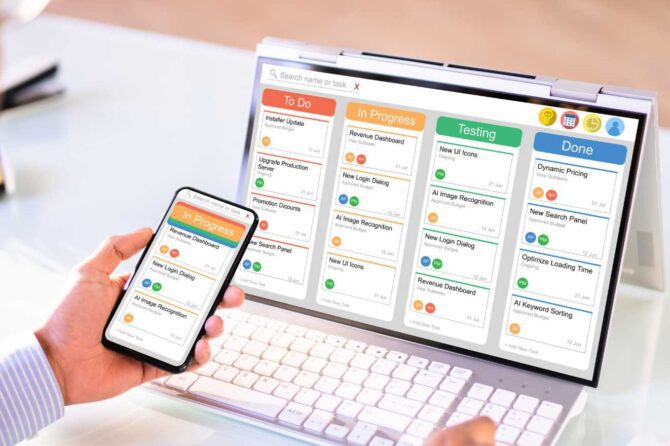Table of Contents
About Content Writing to start with
Content writing is more important today than ever before. With the rise of digital media and social platforms, high-quality content has become a crucial way for brands to engage audiences and drive results. But crafting compelling content takes skill and strategy. This guide will provide simple, actionable steps to help anyone improve their content writing abilities.

Whether you’re a marketing professional, small business owner, or personal blogger, learning how to create content that educates and entertains is essential. In the digital age, content has to grab attention within seconds and hold reader’s interest. With so many voices competing for a limited time, producing mediocre content just won’t cut it anymore. The good news is that anyone can become a skilled content creator by following proven best practices.
This article will walk through the key elements of effective content writing. You’ll learn how to: analyze your audience, establish clear objectives, optimize content structure and formatting, hone your writing style, promote your work, and track performance. With the right approach, your content can capture attention, build loyalty, and drive measurable results. Let’s get started!
Know Your Audience
The most important step in creating effective content is understanding who you are writing for. Take time to research the demographics, interests, goals, and pain points of your target audience.
What is their age range? Location? Gender? Job role? Why would they be interested in your content? What questions do they need to be answered? What problems could your content help solve?
Once you have a clear picture of who your readers are, you can tailor your content specifically for them. Write in a style, tone, and voice that appeals to your audience. Use language they understand and relate to. Focus on addressing their goals and pain points directly.
For example, if you’re writing for busy professionals, use an efficient writing style and offer quick tips and actionable advice. If your audience is teenagers, use a more casual and conversational tone with pop culture references.
The more you can make your content resonate with your target reader, the better chance it has of engaging and retaining that audience. Spend time getting to know them before you start writing.
Have a Clear Objective
Each piece of content should have a specific goal in mind. Is the purpose to inform, entertain, sell, or something else? It’s important to identify a clear objective before you start writing. This will provide focus and direction, ensuring the content stays on track.
Some examples of content objectives include:
- Educating readers on a complex topic
- Providing useful tips and advice
- Generating leads or sales
- Establishing thought leadership
- Promoting a new product or service
Keeping the goal clearly in sight will enable you to shape the tone, style, and information provided. All elements should work together to fulfill the intended purpose. For instance, a lighthearted, humorous tone may suit an entertaining blog post, while an authoritative style is better for a technical guide.
Revisiting the objective periodically helps maintain alignment. If certain sections seem off-topic or unnecessary, they may need to be removed or rewritten to serve the central goal. A piece with a muddled purpose confuses readers. But content tailored to a specific aim keeps people engaged.
In summary, identifying a clear content objective before you start writing provides crucial direction. It guides your voice, style, information provided, and organization from beginning to end. Keep asking yourself – does this paragraph serve the goal? This helps produce cohesive, purpose-driven content.
Craft a Strong Headline
Your headline is often the first thing people see and it makes a huge impression. An effective headline grabs attention and compels the reader to continue. Follow these tips for crafting a headline that works:
- Make it emotional and benefit-driven. Highlight the key benefit the reader will get from your content. Focus on their pain points and how you’ll solve them.
- Keep it short, clear, and compelling. Get to the main point quickly in 5-10 words. Don’t be vague or try to be clever at the expense of clarity.
- Use power words that create interest. Words like “secrets”, “hack”, “guide” evoke curiosity. “How to” also works for many topics.
- Write for humans, not search engines. Keywords are great, but don’t stuff unnatural phrases just to rank – focus first on enticing readers.
- Try different versions and headlines. Craft 3-5 options and test them out to see which resonates most.
- Make the headline fit your brand voice and style. Align it with your overall messaging and tone.
With a magnetic, benefit-driven headline, you’ll hook readers and get them excited to dive into your content. Take the time to craft something compelling.
Structure Your Content
The structure and organizing of your content is crucial to keeping the readers engaged from start to finish. Follow these tips for structuring your content effectively:
- Organize sections and paragraphs logically. Structure your content in a way that flows naturally and makes logical sense. Group related ideas together in sections and paragraphs. Use transitions to guide readers smoothly from one topic to the next.
- Use headers, bullets, etc. to break up text. Formatting elements like headers, subheaders, bullet points, numbered lists, and images help break up long blocks of text. This makes the content more scannable and appealing to read.
- Funnel key info from general to specific. Generally, you want to structure your content to move from broader, high-level information to more detailed, specific takeaways. This helps readers contextualize the details within the bigger picture.

- Start with an introduction. Open your content with an introduction that presents the topic and gives an overview of what’s to come. This helps set the stage for readers.
- Put key takeaways at the end. Summarize the most important points or share concluding thoughts at the end. This reinforces the core message and gives readers something memorable to walk away with.
- Keep sections short and focused. Avoid overly long sections. Chunking your content into bite-sized sections makes it easier to digest. Each section should focus on one sub-topic or idea.
Following strong structure and organization principles will ensure your content flows logically and keeps readers engaged from start to finish.
Write Engaging Copy
Your content should be written in a way that resonates with your readers and keeps them engaged throughout. Follow these tips:
- Use simple, clear language that readers can easily understand. Avoid complex jargon and industry-specific terms when possible. Write conversationally, like you’re speaking directly to the reader.
- Share real stories, examples, and stats to bring your content to life. These details make the content more relatable and memorable. Just ensure they are relevant and move the narrative forward.
- Insert quotes, humor, and personality when fitting. This gives the content your unique voice. But use judiciously, as overdoing it can distract or annoy readers.
- Vary sentence structure and paragraph length to add flow. Short, punchy sentences keep readers’ attention, while the occasional longer paragraph lets them dive deeper into a concept.
- Use active voice instead of passive whenever possible. For example, “Our team designed the product” is more engaging than “The product was designed by our team.”
- Avoid excessive use of adjectives and adverbs. They can come across as hyperbolic sales language. Strong nouns and verbs make a bigger impact.
- Be scannable and skimmable. Use formatting like bullet points, short paragraphs, and subheadings to make your content easy to digest.
- Close each section with a transition sentence or paragraph to lead smoothly into the next topic.
Following these tips will help you create copy that educates and delights your readers.
Edit and Refine
After you finish your initial draft, set it aside for at least a few hours before you begin editing. This will give you a fresh perspective to refine the content.
Carefully self-edit to fix any errors in grammar, spelling, punctuation, etc. Read through line-by-line and tighten up the text by removing any fluff, repetition, or unclear sections.
Simplify the language when possible to make it easy to understand. Break up any dense paragraphs into shorter chunks that are skimmable.
Double-check any formatting, image alt text, headings, etc. Make sure they are consistent and aligned with accessibility best practices. Look at the overall structure and organization of information – does it flow logically?
It can be helpful to read the content out loud to identify awkward phrasing. Always keep your audience and goals for the content in mind during the editing process.
Refine and polish until you are satisfied with the final draft. This important step transforms your initial writing into a high-quality piece ready for promotion. Invest time into careful editing for maximum impact.
Promote Your Content

Getting your content in front of the right audience is crucial for driving engagement and readership. Here are some effective promotion tactics:
Share on social media, email, etc.
- Share your content across your own social media channels like Facebook, Twitter, LinkedIn, Pinterest, etc.
- Post on relevant Facebook Groups and Subreddits.
- Send it to your email list if you have one.
- Ask colleagues and friends to share with their networks.
Guest post on relevant sites
- Identify websites and blogs where your audience hangs out and pitch guest posting opportunities.
- Include backlinks to your content within the guest posts.
Pitch to influencers and media
- Make a list of relevant influencers and journalists.
- Email them a personalized pitch about your content and why it would interest their audience.
- Offer to write guest posts for their blogs.
Monitor engagement
- Use Google Analytics to track traffic and engagement metrics.
- See which promotion channels are driving the most visits.
- Pay attention to social shares and links to your content.
- Refine your promotion strategy based on what works.
Analyze Performance
Tracking analytics for your content is crucial for understanding what resonates with your audience and tweaking your approach accordingly. Here are some key metrics to analyze:
- Pageviews and unique visitors – How many people are reading your content? Is traffic steadily increasing or declining over time?
- Bounce rate – What percentage of visitors leave your page without interacting further? A high bounce rate may indicate content doesn’t meet expectations.
- Time on page – How long are visitors spending reading your content? More time indicates they’re engaged.
- Social shares – Are people sharing and recommending your content? Popular social content likely resonates.
- Backlinks – How many other sites link to your content? More backlinks generally mean quality content worth referencing.
- Conversions – For gated content like ebooks, how many downloads or conversions result? This shows the content’s business value.
Regularly monitoring these metrics provides valuable insights into how your audience responds. Identify your most popular content, assess why certain posts underperform, and continually refine your strategy to create content that truly engages your readers. The more you analyze performance, the better you’ll get at consistently producing compelling content worth sharing.
Tips to remember…
Effective content writing requires thoughtful planning, strategic execution, and continual refinement. By following the steps outlined in this guide, you can unlock your full potential as a content creator.
To recap, start by clearly defining your target audience and aligning your content strategy with their needs. Craft compelling headlines and structure your content in a logical flow to maximize engagement. Write in a conversational yet authoritative tone, providing value through original analysis, insights, and examples.
Polish your draft through multiple rounds of editing to ensure the content is error-free, flows smoothly, and accomplishes your objectives. Promote your content across channels to reach your intended audience. Continually analyze performance metrics to inform improvements.
The path to effective content writing is a journey of lifelong learning and refinement. With consistent practice and dedication to your craft, you can master the essential strategies covered here. Now go unleash your inner writing genius to produce content that educates, inspires, and delights your readers. Write to us if you want to discuss more about content writing




